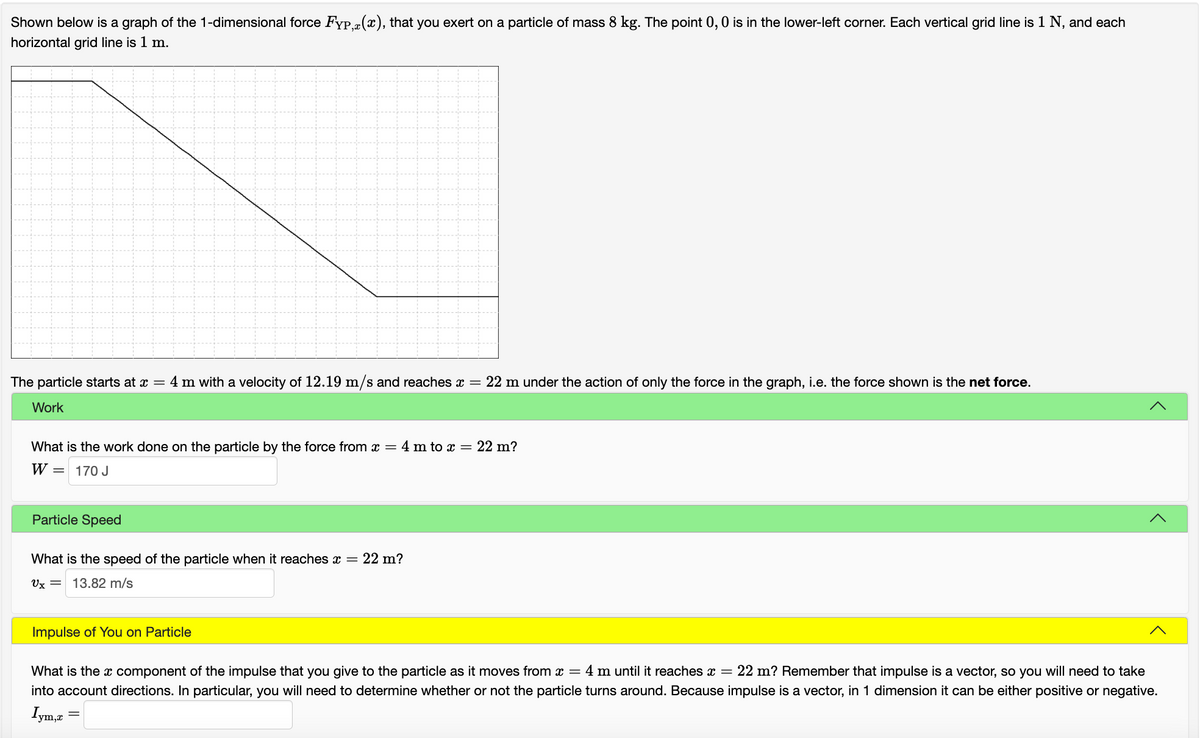Shown below is a graph of the 1-dimensional force FYP,x(x), that you exert on a particle of mass 8 kg. The point 0,0 is in the lower-left corner. Each vertical grid line is 1 N, and each horizontal grid line is 1 m. The particle starts at x=4 m with a velocity of 12.19 m/s and reaches x=22 m under the action of only the force in the graph, i.e. the force shown is the net force. What is the x component of the impulse that you give to the particle as it moves from x=4 m until it reaches x=22 m? Remember that impulse is a vector, so you will need to take into account directions. In particular, you will need to determine whether or not the particle turns around. Because impulse is a vector, in 1 dimension it can be either positive or negative
Shown below is a graph of the 1-dimensional force FYP,x(x), that you exert on a particle of mass 8 kg. The point 0,0 is in the lower-left corner. Each vertical grid line is 1 N, and each horizontal grid line is 1 m.
The particle starts at x=4 m with a velocity of 12.19 m/s and reaches x=22 m under the action of only the force in the graph, i.e. the force shown is the net force.
What is the x component of the impulse that you give to the particle as it moves from x=4 m until it reaches x=22 m? Remember that impulse is a vector, so you will need to take into account directions. In particular, you will need to determine whether or not the particle turns around. Because impulse is a vector, in 1 dimension it can be either positive or negative.

Trending now
This is a popular solution!
Step by step
Solved in 2 steps









